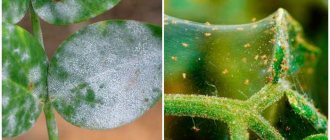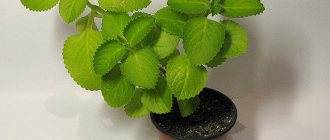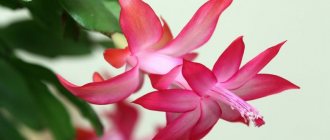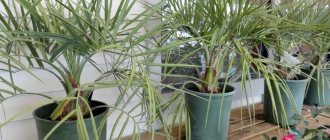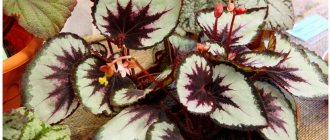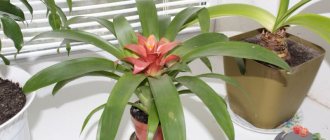History of appearance and description of the bush
The homeland of the Japanese subspecies of rhododendrons is Japan; it is not for nothing that the appearance, especially the flowering, of the tree resembles the symbol and pride of the land of the rising sun - sakura. It appeared in Europe in the 1860s, and since then breeders have begun to develop new varieties based on it.
Japanese salmon rhododendron
Description of the plant
The shrub belongs to the Ericaceae family of the rhododendron genus. The low tree grows up to 2 m in height and spreads 1.5 m wide. The leaf blades are green with small and fine hairs on the surface.
For your information! Although the tree is nicknamed "pink", the flowers of the Japanese salmon rhododendron are pink-orange, while other varieties produce white and yellow flowers.
Since Japanese rhododendron is a deciduous tree, as autumn approaches the foliage turns orange, then dries out and falls off.
Due to the abundant flowering, from afar it seems that the tree has absolutely no leaves. The buds are collected in inflorescences reaching a diameter of up to 10 cm. One inflorescence can include up to 12 buds. It begins to bloom at the end of May and continues throughout the summer.
View during flowering
Common varieties
Today, a large number of azalea varieties are known in the world. However, as practice shows, not all of them grow at home.
In modern apartments you can grow azaleas, which come from India (Rhododendron Simsii), as well as from Japan (Rhododendron Obtusum). Let us next consider in more detail the characteristics of each plant from the presented varieties.
Japanese azalea is a plant that often decorates not only window sills in apartments, but also areas of greenhouses, as well as gardens. When growing this specimen in apartment conditions, it, as a rule, does not even reach 60 cm in height. When mature, the Japanese azalea becomes very large, taking on the appearance of a pillow strewn with flowers. A plant of this variety responds well to temperature changes, as well as to pruning and shaping. In modern indoor floriculture, varieties of Japanese azalea such as Melina, as well as Kermesina Alba (pictured below), are very popular.
Speaking about the Indian azalea, it should be noted that plants whose varieties come from such an exotic country are used as the basis for breeding the most beautiful species of the variety in question. When grown indoors, Indian azaleas are small. The height of adult plants, as a rule, fluctuates around 40-60 cm, but in the garden it will turn into a real tree, the height of which can be about 170 cm. The main difference between the Indian azalea and the Japanese one is that it is characterized by larger flowers. The most popular indoor varieties of this species are Stella Maris, Albert-Elizabeth, Knap Hill, Golden Eagle, as well as Knap Hill Sylphides and deciduous Jolie Madame (pictured below).
Let us next consider the features of growing azaleas indoors.
Popular varieties of Japanese rhododendron
Rhododendron Helliki: description
Basically, all varieties are hybrids of two varieties of rhododendron: Japanese and azaleas.
The most famous varieties:
- cream. Height is lower than other varieties. The flowers are pastel light green with thin yellow veins;
- yellow. Sprawling bush with chaotic shoots. The flowers are bright yellow, each inflorescence contains at least 20 buds;
- salmon. Frost-resistant tree with orange-pink flowers;
- white. It has white flowers with yellow stamens in the middle.
Unusual varieties of azaleas with yellow flowers
Hybrid azalea "Anneke" can reach a height of 2 meters. Large (up to 8cm) flowers have a lemon-yellow tint. Long, slightly pointed petals are curled at the ends, giving the flower a slightly sloppy appearance, but without diminishing its attractiveness. The foliage, lushly green in summer, turns yellow in autumn.
Hybrid azalea "Golden Sunset" will grow up to one and a half meters in height. The flowering process begins with the appearance of foliage: the crown is decorated with striped yellow-orange buds that bloom into golden-yellow flowers. The veins on the petals are clearly defined, thanks to which, depending on the lighting, you can observe an interesting play of shades: yellow, golden, orange. The ambiguous shade distinguishes this variety from others with yellow flowering.
Application in landscape design
Swamp iris, bearded, Japanese, Dutch varietal
Japanese rhododendron is very often used in landscape design. It is used to create park compositions. It is especially popular in the creation and design of parks and gardens in the Japanese style. In addition to group ones, rhododendron is used in single compositions.
Tree in open ground
Varieties for central Russia
For planting in the Moscow region, you need to choose only frost-resistant varieties. Here are some of them.
- Rhododendron, then r. Ledebura;
- R. Katevbinsky and its hybrids;
- R. Smirnova and hybrids;
- R. Short-fruited;
- R. Largest;
- R. Golden;
- R. Canadian;
- R. Schlippenbach;
- R. Vazeya;
- R. Pukhansky;
- R. Adhesive;
- R. Pink.
Varieties for central Russia. Rhododendron pink
- And:
- R. "Costerianum";
- R. Japanese;
- R. Kamchatka;
- R. yellow;
- R. alpine (dwarf).
How to plant Japanese rhododendron
Japanese rhododendron has good frost resistance, so its cultivation is widespread in the western part of Russia and the Urals, but the plant will not take root in all regions of Siberia.
Preparing the seedling and site
Rhododendron Nova Zembla
The seedlings are kept in water until all air bubbles float to the surface. For good survival and strong immunity, the roots are treated with growth activators.
The planting area should be slightly shaded. You need to choose northern places, for example, you can plant a bush next to a building on its northern side. Planting is carried out in fertile, loose areas with high acidity. Groundwater must pass at a depth of at least a meter.
Important! It is not recommended to plant rhododendron next to maple, linden, elm, poplar, linden and willow. Due to the same level of root systems, competition for nutrients will arise. Larch, oak, pear, apple and pine will be good neighbors.
Step by step landing
The bush is planted in open ground in the spring immediately after the end of frost, in April or May. However, autumn planting is also practiced, which can be done from September to November.
First, you need to dig holes about 40 cm deep with a diameter of at least 60 cm. A substrate of loamy soil and peat is poured into the bottom. Seedlings are placed on top of the layer, covered with earth and compacted well.
It is necessary to plant the seedling so that the root collar is at the level of the ground surface. Then each bush is watered generously with settled water at room temperature. It is necessary that the water thoroughly moisten the soil to a depth of at least 20 cm. After this, begin the procedure of mulching the soil. Sawdust and leaves can act as mulch.
Important! If only one seedling is planted, the winds can damage the branches of the tree. Therefore, you need to choose a site next to buildings or build a wooden support to which you can tie the trunk.
Rhododendron planting and care in the Moscow region
To grow a beautiful and amazing plant called rhododendron at your summer cottage in the Moscow region, you need to know what subspecies of this tree exist and how to properly care for them. Studying the origin of the exotic shrub and its natural habitat will help in this matter.
Rhododendron is a magnificent plant in its decorativeness and diversity of species. Many gardeners are sure that due to its exotic origin it is very difficult to grow. In fact, if you follow fairly simple and understandable rules, you can become the owner of a handsome man even in areas with a rather harsh climate, for example, in central Russia, namely in the Moscow region.
Reproduction
Rhododendron is propagated by seeds and vegetatively:
- layering;
- dividing the bush;
- vaccination;
- cuttings.
Reproduction by layering
The easiest and fastest way is propagation by layering. To do this, in the spring, the lowest branches are dug into holes at least 15 cm deep. To secure the shoot, you need to pin it with metal staples. The top of the shoot also needs to be fixed. It is necessary to tie it vertically to a peg. The next year, the shoot is separated from the main tree and transplanted to the chosen location.
Cuttings are a more complex method of propagating rhododendrons. Strong, long, semi-lignified shoots are cut into cuttings up to 10 cm long. The lower three leaves are removed, and the cutting is placed in a special solution to stimulate growth for half a day. Small pots are filled with a mixture of fertile soil, peat and sand. Each cutting is planted in a separate pot. Afterwards, the soil is watered and covered with polyethylene or plastic bottles cut in half.
For your information! After 1.5-2 months, the cuttings take root, and they are planted in large containers and placed in a cooler, lighted and ventilated room.
Brief description of cultivation
- Temperature . In summer, from 12 to 18 degrees, and in winter - from 6 to 10 degrees (not warmer than 13 degrees).
- Humidity . Requires high humidity, daily spraying from a spray bottle is necessary.
- Illumination . It is necessary to provide a large amount of bright light, but at the same time the bush needs protection from direct sunlight.
- Watering . The soil mixture in the pot is moistened systematically and abundantly. Do not allow it to dry out.
- Substrate . It should have high acidity and be light.
- Fertilizer . Feed in spring and summer 2 times a month. To do this, use fertilizers for azaleas.
- Transplant . Conducted in the spring once every two or three years.
- Reproduction . Apical cuttings.
- Features of care . The plant feels best in cool conditions. Mandatory pruning in spring is required.
Beautiful flowering indoor plant Azalea. How to properly care for azaleas and what to consider.
Care
Caring for the Japanese salmon species is no different from that for other varieties of rhododendrons. An unpretentious tree does not cause any trouble when caring, but is very demanding in terms of maintenance conditions.
Note! It is necessary to regularly weed the area under the bush, but this must be done manually. The root system of rhododendrons is very vulnerable; hoes and choppers can damage it.
The plant does not need pruning to form a crown. The only thing that needs to be removed is dried and rotten shoots. Sections of thick branches must be lubricated with garden varnish.
The abundant flowering of rhododendron next year may be replaced by scant blooming of buds. In this case, the already faded inflorescences are broken out so that the plant can direct all its energy to laying new young flower buds.
How to water and fertilize correctly
Do not allow the soil to dry out and water the tree with cold and hard water. To soften the water, you can acidify it by dissolving a little high-moor peat in it. If possible, it is recommended to water with river or rain water. It is important that the soil is soaked to a depth of at least 20 or 30 cm. To avoid stagnation of moisture in the soil, the soil is watered slowly so that the water has time to soak properly.
Important! For additional moisture during dry periods, you need to spray the above-ground part of the plant with water from a sprayer.
It is necessary to carry out at least two feedings during the entire active season of the tree. The plant is fed the first time in the spring, and the second time after flowering. It is better to apply fertilizing in the form of liquid fertilizers. A good folk method is fertilizer made from mullein and horn flour. To prepare it, take 100 g of the mixture, dissolve it in a bucket of water and treat the soil with this solution.
To maintain normal soil acidity, it is necessary to add superphosphates, ammonium nitrate, and potassium nitrate.
Caring for azaleas at home
Indoor azalea is a rather whimsical and demanding plant to care for. The main difficulty is that for normal growth and development the bush needs coolness. At home, it is quite difficult to provide the plant with the correct temperature regime. If the room is warm, this will lead to the leaves flying around, and the plant will die over time. At the same time, the gardener will certainly be rewarded for his work and care with spectacular and long-lasting flowering.
Temperature
Indoor rhododendron is a cold-loving crop. In summer, the flower feels best at temperatures from 12 to 16 degrees. In the autumn-winter period, when the buds are laid, the air temperature should not be higher than 8–12 degrees. For a flowering bush, the optimal temperature is about 15 degrees.
A cool garden is perfect for keeping azaleas in the summer, and a heated balcony in the winter.
Air humidity
For such a crop it is necessary to provide high air humidity. Therefore, experts advise moistening the bush with a sprayer every day. To do this, use soft water, the temperature of which is close to room temperature. It is not recommended to spray a flowering bush, since when droplets of moisture get on the petals, spots appear on them, reducing the decorativeness of the flowers.
In order to increase humidity, it is recommended to place the pot with the plant in a high tray, which is pre-filled with moistened expanded clay, pebbles and/or sphagnum moss.
Illumination
The plant needs a lot of bright light, which should be diffused. A window with a western or eastern orientation is best suited for it. If you choose a southern window sill, then the azalea will need protection from direct sunlight and frequent moistening from a spray bottle. The bush blooms even if it is placed on a northwestern windowsill.
In the summer, if possible, indoor rhododendron is taken out into the garden. At the same time, choose a shady place for it.
Watering
The plant reacts extremely negatively to drying out the earthen ball in the pot. This leads to massive leaf loss. In this regard, it is necessary to water it abundantly and systematically. But at the same time, you need to ensure that water does not stagnate in the substrate, as this can cause rot on the roots or fungal diseases.
Bottom watering is perfect for the plant. To do this, fill a tall container with water into which the flower pot is immersed. It is pulled out after 30–40 minutes. During this time, the bush will absorb the amount of moisture it needs.
It is recommended to mix water for irrigation once a month with two or three drops of lemon juice.
Substrate
An acidic and loose substrate is excellent for such a culture (optimal pH 4.0–5.0). You can use store-bought azalea soil mixture. To prepare the substrate with your own hands, combine sand, leaf soil and soil from a coniferous forest, which are taken in equal parts. At the bottom of the pot you need to make a high-quality drainage layer.
Fertilizer
Fertilizing is carried out in the spring-summer period once every 15–20 days. To do this, you can use fertilizer for flowering crops without lime or for azaleas. After replanting, the bush should not be fertilized for two months.
Trimming
Young shoots are pinched 2 or 3 times in April–July. To do this, they should be shortened by 20–30 mm. Thanks to this, the formation of flower buds on young shoots in the last summer and first autumn weeks is stimulated. This promotes more luxuriant flowering. In addition, the azalea should cut out all the extra branches growing inside the bush, as well as those shoots that have become very elongated.
Transplanting azalea
The culture does not need frequent replanting. It should be carried out once every 2 or 3 years, and this is done in the spring.
Indoor rhododendron reacts extremely negatively to transplantation, and therefore it is carried out very carefully, while trying not to injure the root system. It is recommended to carry out transplantation using the transshipment method.
The container for transplantation is not very high. Do not under any circumstances bury the base of the bush.
Azalea: how to choose, transplant and care correctly
Bloom
Azaleas bloom at home in winter and spring. All varieties are divided into 3 groups according to their flowering period:
- Early . Flowering begins in January.
- Average _ The flowers bloom in the last weeks of winter.
- Late . The bush blooms at the beginning of spring.
In order for the bush to bloom more profusely, you will need to carry out 2 or 3 pinchings in the spring and summer. This stimulates the growth of young shoots, and it is on them that buds form.
To ensure the correct formation of flower buds, azaleas must be kept in a cool place (10 to 12 degrees) throughout the fall. After the bush begins to bloom, it should be moved to a warmer place (about 15 degrees). The bush blooms for two to three months. If the room is excessively warm, this will lead to a reduction in the duration of flowering.
It is important to promptly remove wilted buds.
Rest period
The duration of the rest period is 2 months. It begins after the plant has flowered. During this period, the bush does not require special care.
Diseases and pests
Japanese rhododendron is not known for its disease resistance. The plant is often attacked by pests, including:
- scale insects;
- bedbugs;
- spider mites;
- slugs and snails;
- weevils;
- mealybugs.
Leaf chlorosis
Very often the tree becomes infected with fungal diseases. Diseases to which Japanese rhododendron is susceptible:
- gray mold;
- chlorosis;
- cancer;
- leaf spotting.
Diseases and pests appear due to improper care, so it is worth caring for the plant more carefully and responsibly.
Fungicides are good against pests; they destroy parasites and disinfect the affected areas. Bedbugs, ticks and weevils are eliminated by spraying the bush with diazinon. The top layer of soil is treated with the same preparation. Fungal diseases are combated by treating with Bordeaux mixture.
Rhododendron in landscape design
With chlorosis, the leaf blades of the tree begin to fade and turn yellow, they become small and stop developing. This happens due to the fact that the formation of chlorophylls is disrupted, the process of photosynthesis is suspended. Spraying the above-ground part of the rhododendron and treating the soil with a solution of iron sulfate help prevent chlorosis.
Rhododendron deciduous Japanese salmon is a popular representative of the genus of the same name. Thanks to its beautiful appearance, the tree will decorate any park ensemble and garden composition.
Japanese garden azalea: planting and care
According to modern classification, garden azalea is called rhododendron. This family includes a large number of species, distinguished by their beauty and lush flowering. All these varieties may have significant differences among themselves:
- Shrubs can be deciduous or evergreen.
- Be between half a meter and three meters in height.
- Vary in flowering time.
Garden azalea grows in temperate climates . Some varieties of rhododendron can only grow in cold regions. The height of the plant and the diameter of the calyx of a garden azalea can vary significantly.
A classic garden azalea looks like this:
- The shoots of the plant are very tender and fragile and covered with scales. Such branches are very easily subject to mechanical damage and require special care.
- Japanese azalea sprouts are covered with light, thin bark.
- The leaves of the plant traditionally have an oval shape. If we are talking about hybrid varieties, the leaf may be round or carved.
- Garden azaleas grow both in groups and as individual shrubs.
- Inflorescences can be monochromatic or multi-colored. Flowers can be simple, fringed or double.
Signs and superstitions associated with azalea
In Japan, Azalea has been known for more than a thousand years. The plant is used in the art of bonsai. The Japanese also believe that if a man gives Azalea to a woman, he can count on reciprocity. Even if she had no reciprocal feelings before.
Europe and America have developed their own signs and superstitions associated with this flower.
- The plant is believed to bring peace and harmony.
- Another magical property is getting rid of the evil eye. If a plant in the house begins to fade without any reason, it means it is taking away negative energy.
- There is a belief that the flower rids the house of pests. Apparently they can't stand the smell.
- Sign: Azalea began to bloom magnificently - to good luck and financial well-being.
- There is also such a superstition. If the gifted flower has withered, then the person has unkind plans for you. And, on the contrary, the gifted Azalea began to grow and bloom magnificently - the person gave the gift with all his heart and with pure intentions.
- If you look at the plant for at least 15 minutes a day, it will save you from ophthalmic diseases.
IMPORTANT! The juice of the flower is poisonous. Make sure that children and pets do not reach it.
Pruning azaleas when growing in the garden
The plant begins spring with already formed flower buds, so after wintering, only sanitary pruning of azaleas in the garden is carried out, when dry and diseased shoots are removed.
The formation of the bush is carried out after the flowers have withered. During the procedure, both dry flower stalks and excessively elongated branches are cut off. If you do not pay attention to pruning azaleas for several years, the bush gradually becomes overgrown, the shoots block the access to light and air, which leads to the development of diseases and insect pests.
When pruning azaleas, it is important to remember that the buds are formed on annual shoots, so this year’s growth is not touched. After pruning, large stumps are treated with garden varnish.
Young shrubs up to 3 years of age do not need to be formed, only removing dead shoots.
Rules and landing place
The most destructive natural factors for rhododendrons are wind and excess sun. Therefore, for planting, choose a protected place, on the north or north-east side of the house or fence, which will be shaded from the scorching rays of the sun. Exotics suffer not only from summer, but also from early spring sunlight.
Rhododendron buds, formed in August, often burn in the spring sun, which warms up enough already at the end of February. As a result, the bush blooms only from the north side and where it was covered with snow.
To prevent this from happening, rhododendron needs care. In early spring it is necessary to shade with shields on the southern and western sides. This is done using shading material, which is securely attached to stakes driven into the ground, 1.5 times higher than the rhododendron. Gaps must be left at the bottom and top for ventilation. For shading, available materials are used: lutrasil (density 60g per m2) or spunbond, burlap (stretched in a double layer).
Shading young rhododendron shoots
Rhododendron can be planted near other trees, remembering that trees with a shallow root system are bad neighbors for them. The battle for moisture and nutrients will end in the death of your pets. These include spruce, chestnut, linden, birch, and maple. But the proximity of pine, oak, and fruit trees is quite acceptable. Tree crowns should not overly shade low-growing shrubs.
As for the rhododendron root ball, it is compact and located close to the surface, so they tolerate replanting well, regardless of age.
Particular attention must be paid to the soil in which the bushes will be planted. As mentioned above, loose soil with an acidic environment and good removal of excess moisture is suitable for them. Drying out is also unacceptable. It is recommended to prepare the following earthen mixture: sour, red-colored high-moor peat with pH = 4.5 - 5.5, loam and pine needles in proportions 2:3:1. All components are important and necessary, because peat provides the necessary acidity and nutrition, loam does not allow the soil to dry out excessively, and pine needles make the ball loose and breathable.
Problem with rhododendron leaves with low soil acidity
Soil acidity is one of the most important conditions for good shrub growth. Before planting rhododendron in the chosen location, substrate samples are taken to determine it. Then they are mixed, and one tbsp. The spoon is placed in a glass bowl. Distilled water is also added here (four times the amount). Mix everything thoroughly and leave for a couple of hours, sometimes shaking the mixture. Then indicator paper is moistened with it and the color of the paper is compared with the color of the scale. Thus, you can easily and simply determine the pH at home.
If you find out that the acidity of the soil is insufficient, it can be increased in various ways:
- For example, by adding sphagnum peat from high bogs (its pH is 3.6-4.0), heather soil.
- You can also add chemicals such as aluminum sulphate A12(SO4)3 (150 g per 1 m2 of soil), concentrated sulfuric acid (5 ml per 10 l of water). You just need to remember that you must add acid to water, and not vice versa. And this must be done very carefully. Rhododendrons are watered with the mixture several times during the growing season. This will help maintain the pH of the soil.
- Physiologically acidic fertilizers such as potassium sulfate (Sylvinite, Kainite, Kalimagnesia, Kalimag), superphosphate (Simple superphosphate, Double superphosphate, Phosphorite flour), ammonium sulfate are also a good way to maintain soil pH.
Read also: Spirea planting in autumn and care in open ground
Where is the best place to plant rhododendron?
To drain excess moisture, it is better to plant rhododendron on higher ground so that in the spring the root neck does not get wet due to melt water. To prevent the hillock from spreading, you can cover it with stones, which, moreover, will fit harmoniously into the composition.
- dig a hole measuring about 60x60cm and 40cm deep;
- fill it with substrate components;
- mix thoroughly;
- compacted (this volume will require about 120 liters of ready-made earthen mixture, that is, 40 liters of peat, loam and pine needles);
- dig a hole to the size of the root ball and plant the plant in the ground (while making sure that the base of the root is not buried in the ground);
- the soil around must be mulched with peat or pine needles, without filling its base.
Young specimens with a still undeveloped root system can be planted in a smaller hole - 40x40cm and 30cm deep. The volume of the substrate for it is 25 liters. As the roots grow, the hole can be increased in width by adding fresh earthen mixture.
It is better to plant a fragile tree in a protected, shaded corner of the garden, and only after 1-2 years plant it in a permanent place.
